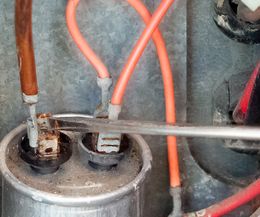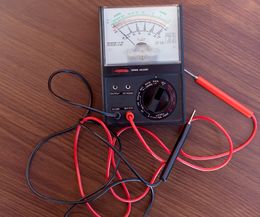Goodman Heating and Cooling Growth Projections
2012 Daikin Buyout of Goodman Heating and Cooling
Perhaps you remember the 2012 Daikin Industries Ltd. buyout of Goodman heating and cooling (Goodman Global Inc.). In initiating the $3.7 billion purchase, Daikin hoped to open new doors into the North America heating and cooling business (1). The deal provided Daikin with better than 900 new points of distribution into the home air conditioning marketplace. However, it also opened some flack in the mind of Moody’s Investors Service and other securities monitoring agencies. For example: Senior analyst for the Iwai Cosmo Securities Co. said that the deal might be a bit too big for Daikin. And of course, such comments caused a serious drop in Daikin shares. At the close of the Aug. 1, 2012 Tokyo trading day, Daikin shares were down 3.5 percent.
Ah, but time passes, viewpoints change, and homeowners reap the benefits.
Fast Forward To 2014 And the Daikin Goal For Goodman Heating and Cooling
 A new Goodman CEO, Takeshi Ebisu, is in place. Established plans for increased growth in manufacturing dominate the vision. Takeshi determines to lead Daikin’s United States operations, including Goodman air conditioning divisions into a productive, innovative and prosperous future. For Mr. Ebisu, the Goodman Global Group Inc., Houston-based heating, ventilation and air conditioning product base will soon incorporate a greater global influence throughout the HVAC community (2).
A new Goodman CEO, Takeshi Ebisu, is in place. Established plans for increased growth in manufacturing dominate the vision. Takeshi determines to lead Daikin’s United States operations, including Goodman air conditioning divisions into a productive, innovative and prosperous future. For Mr. Ebisu, the Goodman Global Group Inc., Houston-based heating, ventilation and air conditioning product base will soon incorporate a greater global influence throughout the HVAC community (2).
With over twenty years experience with Daikin, Takeshi has the negotiating experiences to bring about greater performance, higher market growth, and better global product distribution for both companies. Integrating strategies will make it happen. It’s a global mindset that expands the Goodman heating and cooling focus into the global marketplace while also enhancing support for the local buyer of Goodman Air Conditioning products throughout North America.
The Goodman U.S. manufacturing operations will expand. Both Daikin and Goodman will combine strengths to provide homeowners and business owners with more options, better products, and HVAC resources that will be the rival of anything heating and cooling on the market.
Not Just A Daikin/Goodman A/C Vision
The changes are already in effect. By late 2013, Daikin’s first U.S. A/C manufacturing project cranked up at the Huston-based Goodman air conditioning plant. But that was just a beginning. Currently Daikin produces three brands of HVAC equipment in U.S. based manufacturing plants:
- Goodman Air Conditioning and Goodman Heat Pump Brands
- Amana Air Conditioning Brands
- AND The Newly Introduced Daikin Air Conditioning Brand.
The vision according to Ebisu includes long-term HVAC development projects as well as short-term revenue for all divisions. The manufacturing process will expand to include production of various affiliated products. Regional recognition is just as important as global recognition. Ebisu intends for Goodman and Daikin products to become the local favorite throughout the U.S. The products, already established and respected, will become even more distinguished for:
- Product durability
- Product reliability
- Product options
- Product warranties
- AND Cost-efficient product pricing.
Concerning the growth and the performance issues, Ebisu says: “I’m not saying that hasn’t been the case, but with our new products, we want to be accepted more into the market.”
ACH For Reliable Installation of Quality Goodman Heating and Cooling Products
Goodman heating and cooling products may be the right match for your Arizona home. Priced to be affordable, and crafted to be reliable, a Goodman heat pump will help you remain cool and comfortable all summer long while also providing energy-efficient heating during the winter. These products are remarkably efficient heating and cooling equipment.
Goodman warranties are among the best in the HVAC industry. The American Cooling and Heating workmanship warranty sweetens the value. You get tough products, installed by some of the best A/C technicians in Arizona, and your choice of a Goodman heat pump or a Goodman air conditioning condensing system. And you get a product that best suits the needs of your Arizona home.
For more information concerning reasonable HVAC equipment pricing and reliable Arizona HVAC installation of a Goodman air conditioning system, click here.






